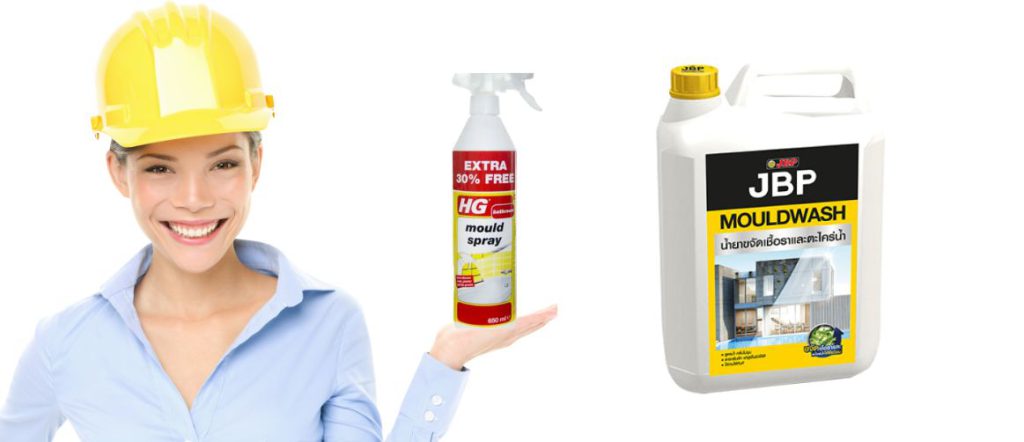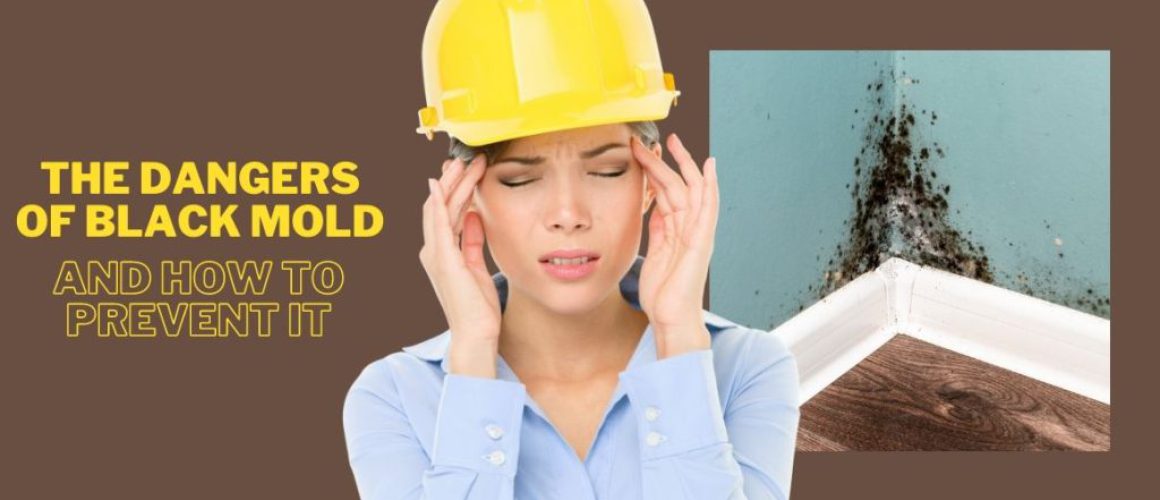The Danger of Black Mold and How To Eliminate It


Table of Contents
Ever wondered about the real danger of black mold? Well, it’s more than just a nasty spot on your wall. Black mold can pose serious health risks. In this article, we’ll dive into the hazards of black mold and provide practical tips on how to eliminate it. So, if you’re ready to wage war against this unwelcome guest, keep reading!
Introduction
“Black mold, a common household menace, is more than just an unsightly inconvenience. The danger of black mold extends beyond aesthetics, posing potential health risks that everyone should be aware of. This silent intruder can creep into your home, office, or any damp environment, wreaking havoc on both your property and health. In this article, we will delve into the dangers of black mold and provide you with comprehensive information on how to combat it.”
“Mold may not seem like a serious issue, but its impact on health and property can be significant. It’s not just about cleaning up the mold you see; it’s about preventing it from coming back.”
Specialist
Understanding Black Mold (Stachybotrys Chartarum)
Black mold, scientifically known as Stachybotrys Chartarum, is a type of fungus that thrives in damp environments and can cause a variety of health issues. It’s not just a simple household nuisance; it’s a potential health hazard. This mold species produces mycotoxins, toxic compounds that can lead to serious health problems when inhaled or ingested. Understanding the nature of black mold is the first step in combating its dangers and ensuring a safe environment.
General Information: Facts and Misconceptions about The Danger of Black Mold
Black mold has been the subject of numerous studies and public health discussions. Despite its notoriety, there are still many misconceptions about it. Let’s debunk some of these myths and provide accurate information about this common household problem. For instance, not all black-colored molds are toxic, and not all toxic molds are black. It’s essential to correctly identify the type of mold before jumping to conclusions.
Black mold, while often associated with a host of health issues, is not always the villain it’s made out to be. It’s true that certain types of black mold, such as Stachybotrys chartarum, can produce toxins that may cause health problems. However, the mere presence of black mold doesn’t automatically mean you’re at risk. The mold must be disturbed or growing in large quantities for it to pose a significant health threat.
Moreover, it’s important to note that mold comes in a variety of colors, not just black. The color of the mold doesn’t necessarily indicate its toxicity level. White, green, or even pink molds can be just as harmful, if not more so, than black mold. Therefore, it’s crucial to address any mold issue promptly, regardless of its color. The key is to maintain a clean, dry environment to prevent mold growth in the first place.


Common Symptoms of Black Mold Exposure
| Symptoms | Description |
|---|---|
| Allergic reactions | Sneezing, runny or stuffy nose, red, itchy, or watery eyes, skin rashes |
| Respiratory issues | Difficulty breathing, wheezing, coughing, sore throat |
| Neurological problems | Headaches, dizziness, memory loss, mood changes |
| Severe reactions | Fever, difficulty breathing, chest tightness |
The Health Risks: Mold Infections and Black Mold
Black mold is more than just an unsightly spot on your wall or ceiling. It’s a potential health risk, with the ability to cause a variety of mold infections and other health issues, particularly in individuals with weakened immune systems or respiratory conditions. Exposure to black mold can lead to symptoms ranging from mild allergic reactions to severe respiratory distress, underscoring the importance of mold control and remediation.
Black mold is notorious for its potential to cause health problems. It’s not just a matter of aesthetics or a minor annoyance. This type of mold can lead to a variety of health issues, especially in individuals with compromised immune systems or pre-existing respiratory conditions.
When black mold grows, it releases spores into the air. These spores, when inhaled, can cause a host of problems. For some, the reaction might be mild – a runny nose, a cough, or itchy eyes. However, for others, especially those with allergies to mold or asthma, the reaction can be much more severe.
In addition to respiratory issues, prolonged exposure to black mold can lead to more serious conditions. Some people may experience chronic fatigue, persistent headaches, and in severe cases, neurological problems. It’s also worth noting that individuals with weakened immune systems, such as those undergoing chemotherapy or those with chronic illnesses, are at a higher risk of fungal infections from black mold.
This is why it’s crucial to address any black mold issues promptly and effectively. Ignoring the problem won’t make it go away – it’ll only give the mold more time to grow and potentially cause health issues. Whether it’s in your home or workplace, taking swift action to eliminate black mold is a key step in maintaining a healthy environment.
How Safe Is It to Live with Black Mold?
Living with black mold is not just an issue of comfort or cleanliness. It’s a serious health risk. Prolonged exposure to black mold can lead to a variety of health issues, from allergic reactions to more severe respiratory conditions. The longer you’re exposed to black mold, the greater the risk of developing health problems. Therefore, it’s crucial to address any mold issue promptly and effectively.
The presence of black mold in your living environment can have a significant impact on your quality of life. It can cause discomfort, disrupt your daily activities, and even force you to relocate temporarily while the mold issue is being addressed. It’s not just about the physical health risks; it’s also about the emotional stress and inconvenience that come with dealing with a mold problem.
Moreover, the health risks associated with black mold are not limited to those with pre-existing health conditions or allergies. Even healthy individuals can experience symptoms such as coughing, wheezing, skin irritation, and eye irritation due to exposure to black mold. In severe cases, exposure to black mold can lead to more serious health issues such as chronic lung illnesses. This is why it’s essential to take black mold seriously and take immediate action at the first sign of a mold problem.
What Are the Dangers of Removing Black Mold?
Removing black mold is not as simple as wiping it off with a cloth. Without proper precautions, the removal process can expose you to a high concentration of mold spores, leading to potential health risks. Improper removal can also lead to the spread of mold spores, exacerbating the problem instead of solving it.
When you disturb a mold colony during the removal process, it can release a cloud of spores into the air. These spores can easily spread throughout your home, finding new places to grow and multiply. This is why it’s crucial to seal off the area where you’re working, to prevent the spread of spores.
Additionally, exposure to mold spores can cause health problems, especially for people with allergies, asthma, or other respiratory conditions. Symptoms can range from sneezing and coughing to more serious issues like shortness of breath and chest tightness. This is why it’s recommended to wear protective gear, such as a mask and gloves, when dealing with black mold.
Mold Cleanup and Remediation: How to Safely Control Mold
Controlling and removing black mold is a task that requires careful planning and execution. It’s not just about getting rid of the visible mold; it’s about ensuring that the mold doesn’t return and pose further health risks. Professional mold remediation services are often necessary to thoroughly eliminate mold and prevent its recurrence.
When dealing with black mold, it’s crucial to understand that a simple cleanup won’t suffice. The spores of this mold are microscopic and can easily spread to other areas, making it difficult to completely eradicate without professional help. Moreover, exposure to black mold during the cleanup process can lead to health issues, especially for those with respiratory conditions or weakened immune systems. Hence, it’s advisable to hire professionals who have the necessary equipment and expertise to safely remove the mold and sanitize the area.
Furthermore, mold remediation is not just about removing the existing mold. It also involves identifying and addressing the source of moisture that allowed the mold to grow in the first place. This could be a leaky pipe, high humidity, or poor ventilation. By addressing these issues, you can prevent the recurrence of mold, ensuring a safe and healthy environment for all.
Steps for Mold Remediation
| Steps | Description |
|---|---|
| Identification | Identify and assess the mold problem in your home or office |
| Containment | Contain the mold to prevent it from spreading to other areas |
| Filtration | Filter the air to remove mold spores |
| Removal | Remove the mold and any affected materials |
| Drying | Thoroughly dry the area to prevent the mold from returning |
| Repair | Repair or replace any damaged materials |
| Testing | Test the area to ensure the mold has been completely removed |
Reduce Exposure to Mold: Practical Tips and Strategies
Reducing exposure to black mold is crucial for maintaining a healthy living environment. This involves more than just mold removal; it also includes preventive measures to keep mold from returning. Here are some practical tips and strategies to help you reduce your exposure to black mold:
- Maintain Good Ventilation: Ensure that your home or workplace is well-ventilated. Use exhaust fans in bathrooms and kitchens to remove moisture to the outside (not into the attic). Vent appliances that produce moisture, such as clothes dryers and stoves, to the outside where possible.
- Control Humidity: Keep indoor humidity below 60 percent (ideally between 30 and 50 percent) relative humidity. Humidity levels can be measured by hygrometers which are available at local hardware stores.
- Fix Leaks Promptly: Leaky roofs and pipes can provide the moisture needed for black mold to grow. Fixing these issues promptly can prevent mold growth.
- Clean and Dry After Flooding: After any kind of flooding, clean and dry your home and everything in it within 24 to 48 hours to prevent mold growth.
- Use Mold-Resistant Products: Use mold-resistant products like mold-resistant drywall or mold-resistant Sheetrock, and mold inhibitors for paints during building or renovating homes.
- Regular Cleaning: Regularly clean your bathrooms and other moist areas of your home with mold-killing products.
Remember, the key to mold control is moisture control. By following these tips, you can significantly reduce your exposure to black mold and maintain a healthy living environment.
Recent Publications: The Latest Research on The Danger of Black Mold
Research on black mold is ongoing, with new findings constantly emerging. These studies provide valuable insights into the dangers of black mold and how to effectively deal with it. Recent research has shed light on the link between black mold exposure and various health conditions, reinforcing the importance of mold control and prevention.
One such study titled “The Myth of Mycotoxins and Mold Injury” discusses the misconceptions surrounding toxic mold syndrome and highlights the importance of accurate information when dealing with mold-related health issues.
Another significant research paper, “Mold and Human Health: a Reality Check”, emphasizes that there is no scientific evidence linking exposure to visible black mold in apartments and buildings to the vague and subjective symptoms often reported by people.
Lastly, a study on the “Inhibitory effects and mechanisms of vanillin on gray mold and black rot of cherry tomatoes” provides insights into potential natural antifungal agents that could be used in the fight against mold.
Tips for Preventing Mold Growth
- Keep humidity levels low, ideally below 50%.
- Ventilate bathrooms, laundry rooms, and other high-moisture areas.
- Use air conditioners or dehumidifiers in humid climates.
- Use exhaust fans when cooking, dishwashing, and cleaning.
- Clean bathrooms with mold-killing products.
- Remove or replace carpets and upholstery that have been soaked and can’t be dried promptly.
Asthma & Community Health: The Impact of Black Mold
Black mold can have a significant impact on community health, particularly for those with respiratory conditions like asthma. It’s not just an individual concern; it’s a public health issue that requires collective action. Communities with high incidences of black mold can see increased rates of asthma and other respiratory conditions, underscoring the need for public awareness and action on mold control.
The spores from black mold can trigger asthma attacks in people who are allergic to mold. It’s not just about the visible mold on walls or ceilings; mold spores can be in the air we breathe, making it a pervasive threat. This is why it’s crucial to maintain a mold-free environment, especially in public spaces like schools and workplaces where many people could be affected.
Moreover, the impact of black mold goes beyond physical health. It can also affect the quality of life and mental health of individuals living in mold-infested environments. The constant worry about health risks and the stress of dealing with mold removal can lead to anxiety and other mental health issues. This is another reason why it’s so important for communities to take proactive steps to prevent and control mold growth.
Conclusion to The Danger of Black Mold
In the battle against black mold, knowledge is your most powerful weapon. By understanding the risks associated with this common household menace, you can take the necessary steps to ensure your environment remains safe and mold-free. It’s not just about reacting to the presence of mold, but also about implementing preventive measures to keep it from making an unwelcome return.
Moreover, it’s important to remember that dealing with black mold isn’t a one-time task. It’s an ongoing commitment to maintaining a healthy living or working space. Regular inspections, prompt action at the first sign of mold, and the use of effective mold control products are all part of a comprehensive strategy to keep black mold at bay. So, stay vigilant, stay informed, and take action to protect your environment from the dangers of black mold.
When it comes to mold, prevention is the best strategy. By controlling moisture and humidity in your home, you can prevent mold growth and protect your health.
Specialist


Call to Action
Now that you’re equipped with this knowledge, it’s time to take action and ensure your environment is free from the dangers of black mold. Check out our Moisture Protection products, including the HG mold spray 650 ml and Mold and algae remover JBP MOLDWASH size 1 liter, to help you in your fight against mold. Don’t let black mold take hold of your environment. Act now and breathe easier.
Also check out our article Control Mold: A Guide to Mold Prevention and Management
Disclaimer: This article is intended for informational purposes only. It is not meant to replace professional medical advice, diagnosis, or treatment. Always seek the advice of your healthcare provider with any questions you may have regarding a medical condition or treatment options.
Frequently Asked Questions
What is black mold?
Black mold, also known as Stachybotrys Chartarum, is a type of fungus that thrives in damp environments. It’s notorious for its potential health risks and is often found in areas with high humidity, such as bathrooms, basements, and kitchens.
What is the danger of black mold?
Black mold produces mycotoxins, which can cause a variety of health issues, especially in individuals with weakened immune systems or respiratory conditions. Symptoms can range from allergic reactions, such as sneezing and skin rashes, to more severe conditions like chronic lung illnesses.
How can I identify black mold?
Black mold is usually dark green or black and has a slimy texture. It often has a musty odor and tends to grow in patches. However, not all black or dark-colored molds are Stachybotrys Chartarum, so it’s best to have a professional mold inspection if you suspect its presence.
How can I prevent black mold?
Preventing black mold involves controlling moisture levels in your home. This can be achieved by fixing leaks promptly, ensuring good ventilation in damp areas like bathrooms and kitchens, and using dehumidifiers in high-humidity environments.
How can I safely remove black mold?
Small areas of mold can often be cleaned with a mold-killing product and a scrub brush. However, for larger infestations or if the mold is in hard-to-reach areas, it’s recommended to hire a professional mold remediation service to ensure safe and thorough removal.
Can black mold return after removal?
Yes, black mold can return if the underlying moisture problem isn’t addressed. Regular inspections and maintaining low humidity levels can help prevent its return.
Can black mold cause long-term health issues?
Prolonged exposure to black mold can lead to long-term health issues, especially in individuals with pre-existing respiratory conditions or weakened immune systems. It’s important to address any mold issues promptly to minimize potential health risks.
What should I do if I find black mold in my home?
If you discover black mold in your home, it’s important to take action immediately. Small areas of mold can often be cleaned yourself, but for larger infestations, it’s recommended to hire a professional mold remediation service. Always remember to address the underlying moisture issue to prevent the mold from returning.
ขอบคุณที่ใช้เวลาอ่านบทความของเราเกี่ยวกับการป้องกันความชื้น ทางเราหวังว่าท่านจะได้รับข้อมูลที่มีคุณค่าและเป็นประโยชน์ ทางเรายินดีให้บริการการปรึกษาฟรีเพื่อพูดคุยเกี่ยวกับความต้องการของท่านและให้คำแนะนำเกี่ยวกับวิธีการป้องกันความชื้นที่กำหนดเฉพาะสำหรับคุณ โปรดติดต่อเราที่ 0858124188 เพื่อนัดหมายการปรึกษาหรือเยี่ยมชมร้านค้าของเราเพื่อค้นหาผลิตภัณฑ์ที่ช่วยป้องกันสินค้าของคุณจากความเสียหายจากความชื้น ทางเราหวังว่าจะได้รับข่าวสารจากท่านเร็วๆนี้
